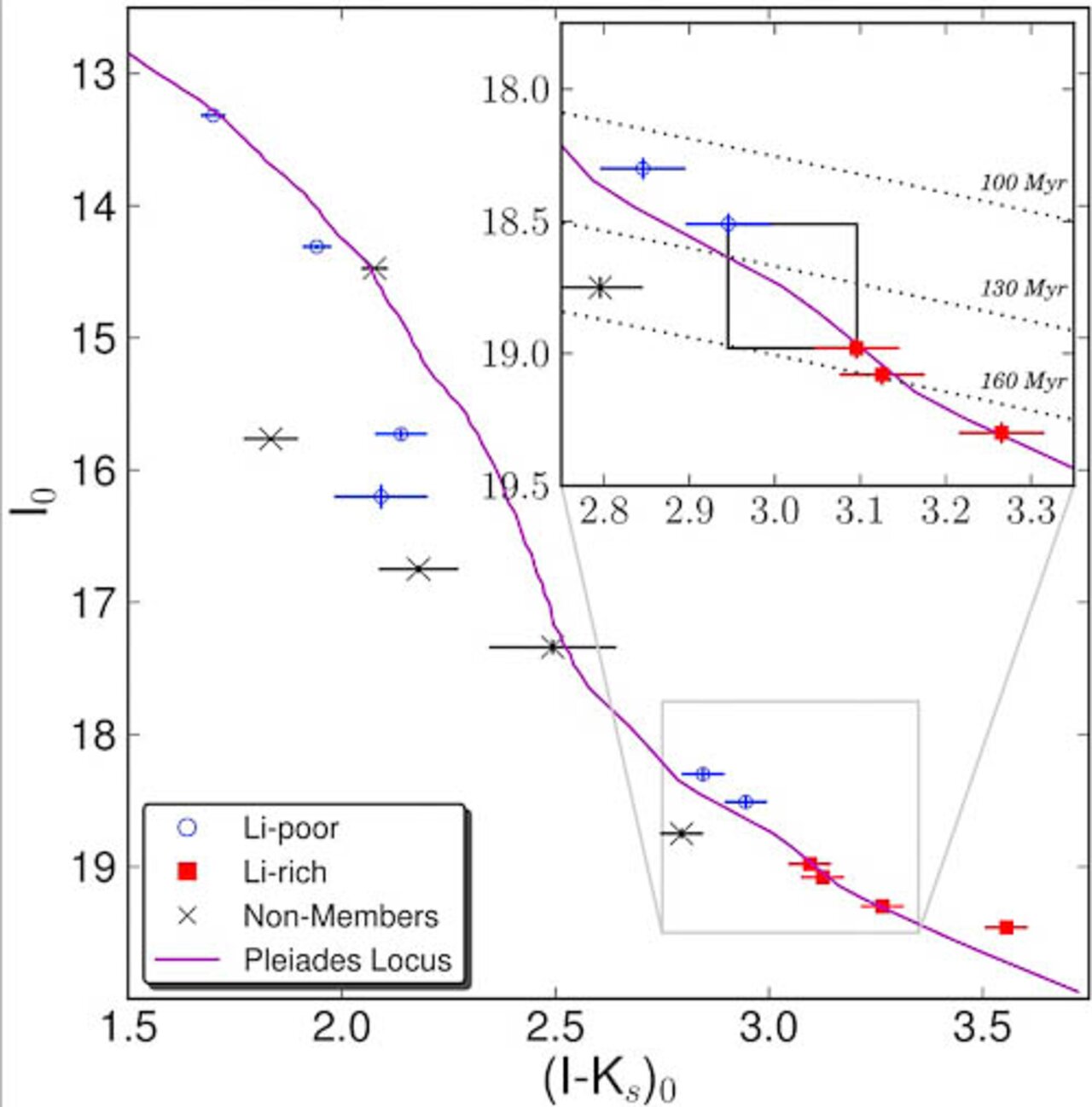Tracing Elements to Measure the Age of a Star Cluster
November 5, 2010

Typically, determining the ages of stars is very sensitive to the assumptions or theoretical models astronomers employ. In new work, Phillip Cargile (Vanderbilt University), David James (University of Hawai'i at Hilo and Cerro Tololo Inter-American Observatory), and Rob Jeffries (Keele University, UK) take advantage of the time-dependent destruction of lithium in young stars to measure the age of the open cluster Blanco 1. They conclude that the stars formed 132 +/- 24 million years ago.
Trace amounts of lithium were created with the origin of the universe, which stars incorporate as they form. However, as stars develop, the high temperatures at their centers destroy the primordial lithium, and the central temperature depends on the age and mass of the forming star. Considering a cluster of stars that all formed at the same time, the more massive (and more luminous) stars deplete their lithium first. Identifying the mass of stars that still retain their original lithium content, the so-called "lithium depletion boundary," yields the cluster age (geminiann10019a). The team used the Gemini Multi-Object Spectrograph on the Gemini North telescope to obtain the optical spectra of the target stars. One challenge of the technique is that it requires quality measurements of faint, low-mass stars, so only a handful of clusters have been age-dated this way.
These lithium depletion boundary ages provide useful comparisons for other, more common stellar age-dating techniques and can provide insight into missing physics in models of stellar evolution. For these new lithium ages to agree with ages derived from the rate at which stars evolve into giants, significant mixing of hydrogen into stellar cores must be included in models.
Links
- This work will be published in the Astrophysical Journal Letters later this year "Identification of the Lithium Depletion Boundary and Age of the Southern Open Cluster Blanco 1". A preprint is currently available.
